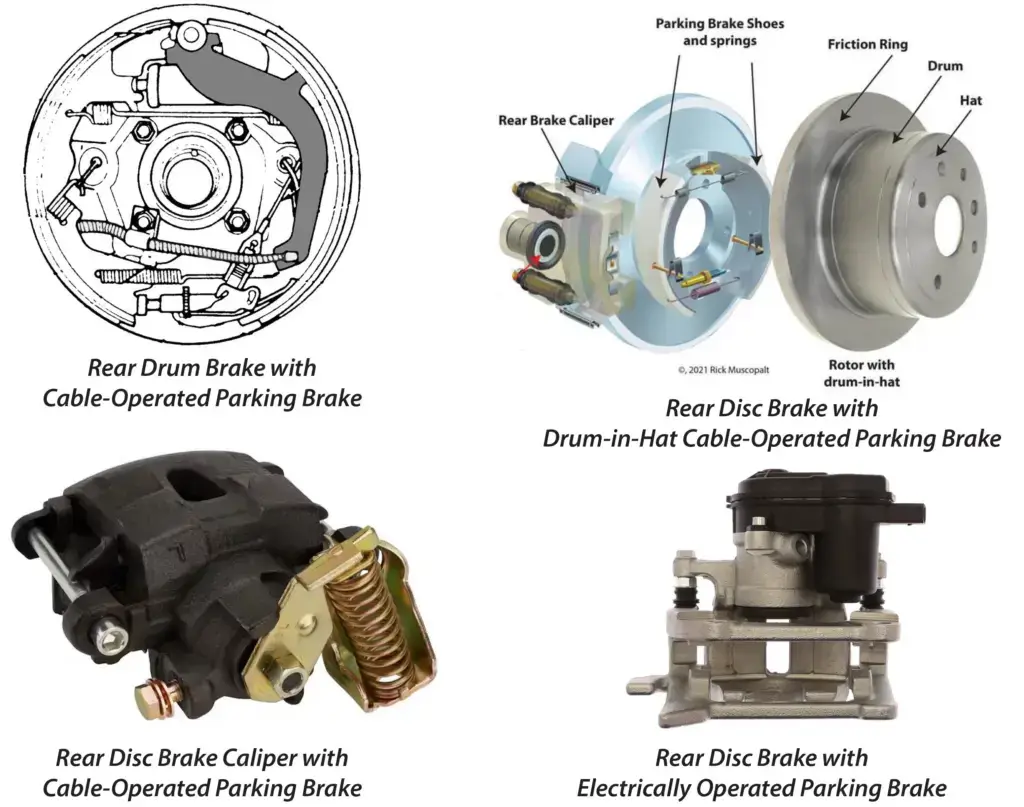Driving with parking brake on: What’s the damage?
Learn what to check after driving with the parking brake on
Driving with the parking brake on can lead to serious damage to your vehicle’s braking system and drivetrain components. While the parking brake is designed to hold the car in place when parked, it can quickly overheat and fail if used while driving. Depending on the brake design, it can cause your entire brake system to fail.
The four types of parking brakes
Type 1) Hydraulic rear drum brakes with a cable-operated mechanical parking brake mechanism
Type 2) Hydraulic rear disc brake caliper with integral cable-controlled parking brake
Type 3) Hydraulic read disc brake with a separate drum-in-hat cable-operated mechanical parking brake mechanism
Type 4) Hydraulic rear disc brake caliper with integral electrically controlled parking brake

The damage from driving with parking brake on by type of parking brake
Type 1
In this type, activating the parking brake presses the brake shoes against the drum continuously. This causes rapid heating which glazes the friction material and overheats the brake drum. If driven long enough, it can overheat and boil the brake fluid in the wheel cylinders, causing a loss of rear braking.
• If the shoes are glazed, replace them, along with all spring hardware
• If the drum is discolored from overheating, replace them.
• If the brake fluid has boiled, check for heat damage to the rubber boots on the wheel cylinder
In a drum brake setup, the normal brake shoes are mechanically forced against the drums by the parking brake cable. If you drive for long periods with the brake shoes in contact with the drums, you’ll overheat the brake shoes and drums and possibly overheat the brake fluid.
Type 2
Driving with the parking brake on in a Type 2 parking brake setup will cause the brake pads to overheat and glaze, as well as glazing the rotor. In extreme cases, the high heat can damage the rear brake calipers.
Replace the brake pads and rotors and test the operation
Type 3
In this setup, the brake pads are not used. But driving with the parking brake shoes engaged with the drum-in-hat rotor can damage the shoes and rotor. Replace the parking brake shoes and the rotor
Type 4
Driving with the parking brake on in a Type 3 parking brake setup will cause the brake pads to overheat and glaze, as well as glazing the rotor. In extreme cases, the high heat can damage the rear brake calipers.
Replace the brake pads and rotors and test operation

Overheated brake shoes — glazed and cracked
